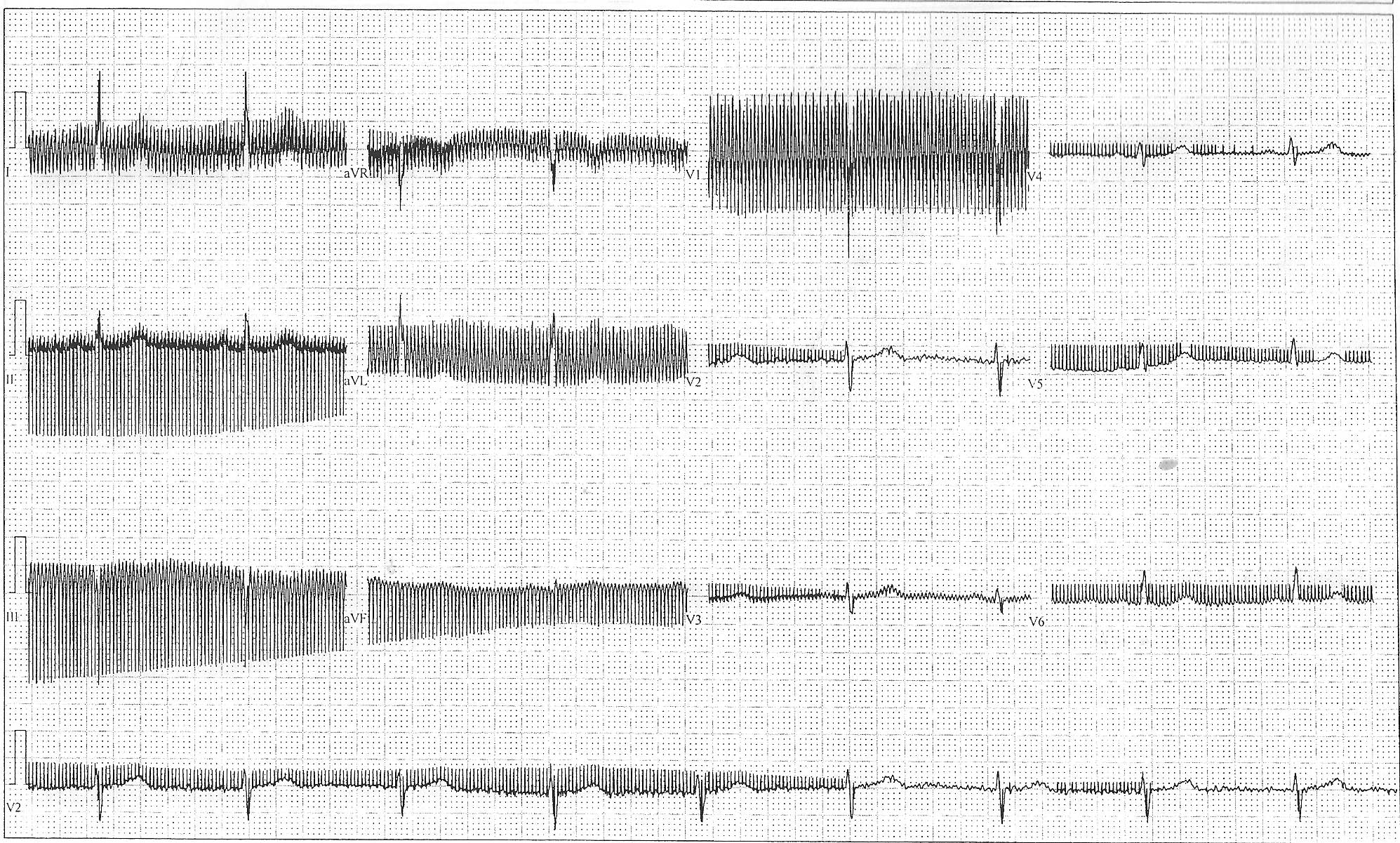Click image to enlarge
For now, forget the chest pain. What's the patient's principle diagnosis?
(Trust me: you'll be seeing more of this.)
-Wes
h/t: Gary Novak, MD
Clue #1: Still uncertain? A major hint to the answer is here, so look only if you must.
Clue #2: By the way, this is not the same diagnosis as Happy's patient.
Clue #3: Here's an example of why I think we'll be seeing plenty of this.

6 comments:
At first I thought it was a DBS device, like for Parkinson's, but whatever it is seems to be firing at 5 Hz. Pretty sure those ones go at 100 or so.
I've heard of lower frequencies being used for everything from epilepsy to frank psychosis, though, so perhaps it's something like that...
Carotid sinus baroreceptor stimulator
whoops never mind, sorry, just saw your clue #2...
Hypoglossal nerve stimulator?
vagus nv stimulator
Thanks to all who have offered their quesses.
NdmXI (our first respondent) properly guessed this device was for the treatment of Parkinson's Disease. Deep brain stimulators consist of a coiled wire insulated in polyurethane with four platinum iridium electrodes that is placed in one of three areas of the brain (with the subthalamic nucleus and the globus pallidus being the most common). The lead is connected to the pulse generator by the extension, an insulated wire that runs from the head, down the side of the neck behind the ear to the pulse generator, which is placed subcutaneously (usually) below the clavicle. Devices implanted on the right limit left-sided tremors while those on the left limit right-sided ones. There is a better than 70 percent chance they can improve movement disorders when properly placed. Infection is the most dreaded complication with a new implant.
The lack of pulsatile bursts of repetetive stimulation differentiates it from a carotid sinus baroreceptor stimulator.
This deep brain stimulator was implanted in 2004 and markedly improved this patient's Parkinsonian tremor, but a noise-free EKG on this patient has never been seen since.
Post a Comment